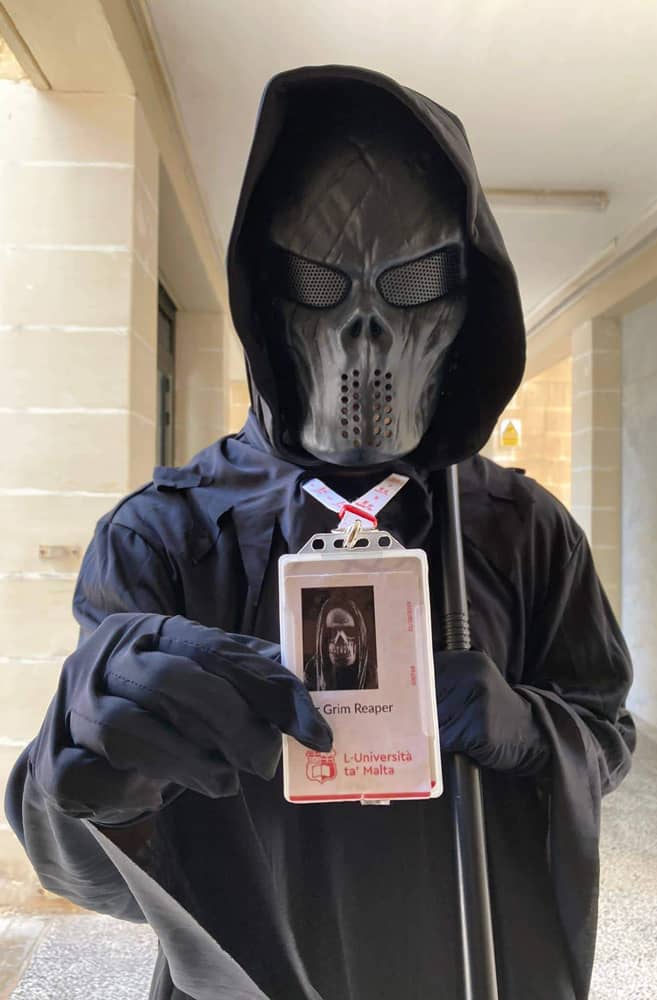Delve into the ancient traditions and mystical origins that continue to haunt the modern celebration of All Hallows’ Eve.
When the leaves turn a certain amber and skeletons and carved pumpkins don our houses, it’s that time of the year: Halloween!
Halloween is commonly thought to have pagan origins, even though its etymology is Christian. Halloween personifies death through iconic symbols: skeletons, ghosts, ghouls, and skulls. It is a melting pot celebration where pagan rituals meet Christianity meet pop culture. In honour of this holiday, let’s unpack its spooky origins!
Bonfires, Animal Heads and Apple Bobbin’
Halloween, celebrated on 31 October, traces its origin back 2,000 years to the Celtic Festival of Samhain (pronounced ‘sah-win’), marking the end of summer and the start of the harvest season. As winter unfurls and the days get colder and harsher, it is a time often associated with human death.
Most likely, it is for this reason that the Celtic pagans believed the spirits of those who died the preceding year roamed the earth the night of Samhain.
The Celts, who lived in what is now Ireland, the United Kingdom, and northern France, believed that the boundaries between the worlds of the living and the dead were blurred on the night of Samhain. They thought the spirits of the deceased returned to earth, causing trouble and damaging crops but also allowing Celtic priests (druids) to make prophecies about the future.
To ward off these spirits, the Celts would light massive bonfires and don costumes of animal heads and skins to disguise themselves from any malicious spirits. The spirits were believed to either be entertained by the living or to find a body to possess for the upcoming year. While Celts would wear costumes to avoid being possessed, the practice suggests why we dress up like witches, ghouls, ghosts, and goblins today.
By 43AD, the Romans had largely conquered most of the Celtic territory. Over the next four centuries, two Roman festivals would intertwine with the traditions of Samhain. The first was Feralia, a day in late October when Romans honoured the passing of the dead. The second was a day to honour Pomona, the Roman goddess of fruit and trees. Her symbol, the apple, might have contributed to the tradition of ‘bobbing for apples’, still practised on Halloween today.

The Christianisation of All Hallows’ Eve
Christianity’s far-reaching hand extended throughout Celtic lands, and by the 9th century, it led to significant changes to the Samhain traditions. 1 November was designated All Saints’ Day (or All Hallows’) by Pope Boniface IV, a day to honour saints and martyrs.
The evening before this holy day became known as All Hallows’ Eve, which eventually evolved into Halloween. Over time, incorporating Samhain’s practices into this Christian holiday ensured the former traditions remained, albeit with a new veneer.
Present Halloween customs were moulded during the 19th and 20th centuries, particularly in the United States. Irish and Scottish immigrants carried various traditions to America, including the practice of dressing up and going door-to-door, which would later morph into modern trick-or-treating.
Jack-o’-lanterns, now synonymous with Halloween, have a rich folklore. An Irish legend speaks of Stingy Jack, a man who tricked the devil multiple times. When Jack died, he was denied entry to both Heaven and Hell, left to wander the Earth with only a burning coal to light his way, which he placed inside a carved-out turnip. Irish immigrants initially used turnips and potatoes for their lanterns in the US, but they soon found the native pumpkin to be a perfect fit.

Over and Under the Veil of Time
The commercialisation of Halloween began in the early 20th century, with the mass production of costumes and the popularisation of trick-or-treating in the 1950s. The holiday now stands as the second-largest commercial holiday in the US after Christmas and generates some $12.2 billion each year.
Over 2,000 years, Halloween evolved from a sombre pagan ritual to a fun-filled, candy-brimming party. Its origins, wrapped in the shroud of time, showcase a blend of cultures and traditions. While the truest roots of Halloween may remain hidden in the mists of ancient history, one thing remains clear: the fascination with the boundary between life and death is a timeless human experience.
Further Reading
Eveleth, R. (2012). The history of trick-or-treating is weirder than you thought. Smithsonian Mag. Retrieved from https://www.smithsonianmag.com/smart-news/the-history-of-trick-or-treating-is-weirder-than-you-thought-79408373/
Markale, J. (2001). Pagan mysteries of Halloween: Celebrating the dark half of the Year. Inner Traditions.
Rogers, N. (2002). Halloween: From pagan ritual to party night. Oxford: Oxford University Press.





Comments are closed for this article!